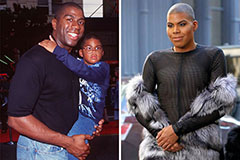Introduction:
Africa, a continent rich in cultural diversity and vibrant traditions, is known for its unique ways of expressing joy, unity, and celebration. One such lively and expressive tradition is the Greetings Dance, a cultural phenomenon that varies across the diverse landscapes of Africa. In this article, we will delve into the fascinating world of Greetings From Africa Greetings Dance in Africa, exploring its significance, diverse forms, and the sense of community it fosters.
The Essence of Greetings Dance:
Greetings Dance is a cultural practice deeply embedded in the fabric of African societies. It serves as a form of communication, celebration, and expression of shared identity. This dance form is often performed during communal gatherings, festivals, and important events, symbolizing a warm welcome, unity, and a sense of belonging. Greetings Dance has been passed down through generations, preserving the cultural heritage of various African communities.
Diversity in Forms:
Africa's vastness is mirrored in the diversity of Greetings Dance forms. Each region and community has its own unique style, steps, and rhythms, reflecting the distinct cultural nuances of the people. For example, in West Africa, the Azonto dance is a popular Greetings Dance characterized by rhythmic movements of the arms and hips. In East Africa, the Maasai people engage in the Adumu dance, an energetic and competitive form of greetings among warriors. Southern Africa boasts the Gumboot dance, originating from miners communicating through rhythmic stomping and slapping of boots. These examples highlight the rich tapestry of Greetings Dance, each thread woven with the cultural identity of its performers.
Rituals and Symbolism:
Greetings Dance is often intertwined with rituals and symbolism, making it more than just a display of rhythmic movements. In many African cultures, the dance is a way of paying homage to ancestors, seeking blessings for the community, or celebrating significant milestones. The intricate steps and gestures carry deep meanings, conveying messages of unity, love, and communal harmony. Colors, costumes, and accessories also play a vital role, representing specific elements of the culture or marking particular occasions.
Community Bonding and Social Harmony:
Beyond its artistic and symbolic dimensions, Greetings Dance fosters a strong sense of community bonding and social harmony. The act of dancing together creates a shared experience, promoting solidarity and a feeling of togetherness. This communal aspect is vital in African societies, where the concept of ubuntu, emphasizing interconnectedness and mutual support, is deeply ingrained. Greetings Dance becomes a powerful expression of this interconnected ethos, bringing people together in joyous celebration.
Adaptation and Evolution:
While Greetings Dance is deeply rooted in tradition, it is not a static art form. Over time, it has adapted and evolved, incorporating new influences and embracing contemporary elements. Modern Greetings Dance performances may blend traditional steps with contemporary music, attire, and choreography, creating a dynamic fusion that resonates with younger generations. This adaptability ensures the continued relevance and popularity of Greetings Dance in the ever-changing cultural landscape.
Preserving Heritage Through Greetings Dance:
In a rapidly changing world, the preservation of cultural heritage is a paramount concern. Greetings Dance serves as a dynamic vessel for preserving and transmitting cultural knowledge from one generation to the next. Through the rhythmic beats and fluid movements, the stories, values, and traditions of African communities are passed down, ensuring that the rich tapestry of the continent's cultural heritage remains intact.
Greetings Dance in the Diaspora:
As African communities have dispersed across the globe, Greetings Dance has transcended geographical boundaries. In diaspora communities, Greetings Dance serves not only as a connection to ancestral roots but also as a means of maintaining a sense of identity and belonging. Celebrations, weddings, and cultural events in diaspora settings often feature Greetings Dance as a way to stay connected with African heritage, creating a bridge between past and present.
Challenges and Revitalization Efforts:
Despite the resilience of Greetings Dance, it faces challenges in the modern era. Globalization, urbanization, and the influence of external cultures can sometimes threaten the authenticity of traditional dance forms. However, many African communities and cultural organizations are actively engaged in revitalization efforts. Initiatives focus on documenting traditional dances, supporting community-based dance education, and encouraging the transmission of knowledge from elders to younger generations.
Conclusion:
In conclusion, Greetings Dance in Africa is a vibrant celebration of unity, diversity, and cultural richness. Rooted in tradition, this expressive dance form transcends time and space, evolving to reflect the dynamic nature of African societies. From the energetic beats of the Azonto in West Africa to the rhythmic stomping of the Gumboot dance in the South, Greetings Dance is a testament to the resilience and vitality of African Greetings From Africa culture. As we celebrate this joyous tradition, let us recognize and appreciate the significance of Greetings Dance in preserving heritage, fostering community, and spreading the infectious spirit of African joy.
 Judd Nelson Then & Now!
Judd Nelson Then & Now! Robert Downey Jr. Then & Now!
Robert Downey Jr. Then & Now! Jenna Von Oy Then & Now!
Jenna Von Oy Then & Now! Macaulay Culkin Then & Now!
Macaulay Culkin Then & Now! Earvin Johnson III Then & Now!
Earvin Johnson III Then & Now!